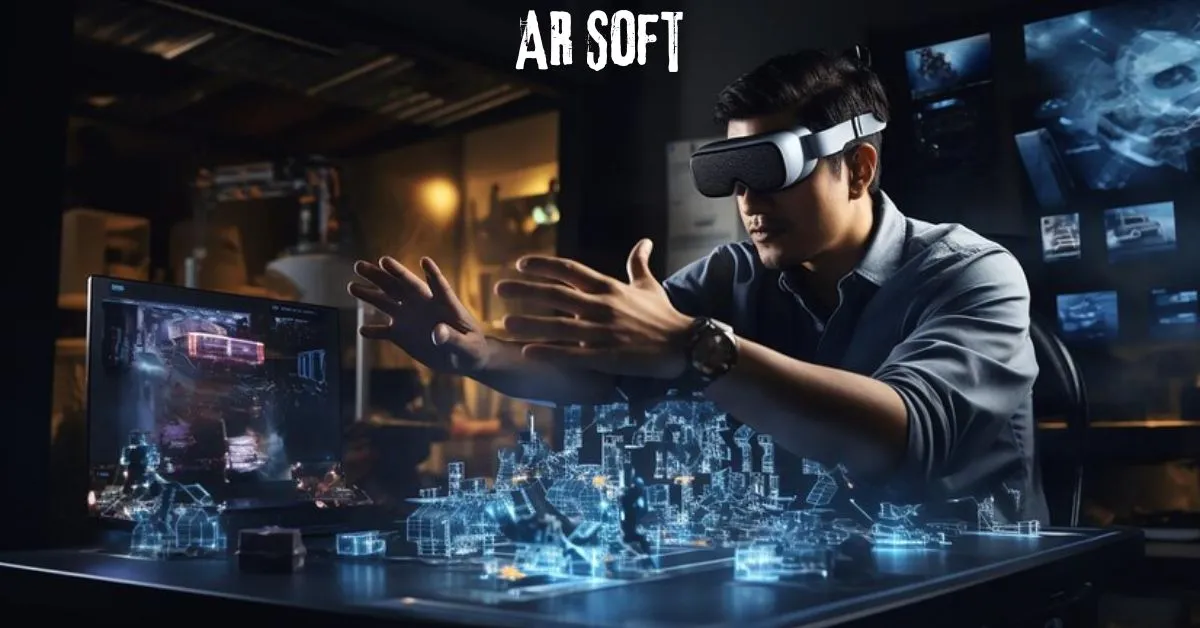Augmented Reality (AR) has transitioned from a futuristic concept to a dynamic and influential technology impacting various sectors. At the heart of this transformation lies AR software, often abbreviated as AR soft. This software is pivotal in creating immersive experiences that blend the physical and digital worlds. In this article, we will explore the intricacies of AR software, its applications, benefits, challenges, and future prospects.
Introduction to AR Software
AR software refers to the programs and applications that enable augmented reality experiences. Unlike Virtual Reality (VR), which immerses users entirely in a digital environment, AR enhances the real world by overlaying digital information onto physical objects. This capability allows users to interact with digital elements within their real-world surroundings.
Understanding AR Technology
Before diving into AR software, it’s essential to grasp the underlying technology of augmented reality. AR combines digital content with real-world environments using various technologies, including computer vision, simultaneous localization and mapping (SLAM), and depth sensing.
1. Computer Vision
Computer vision technology helps AR systems recognize and interpret visual information from the environment. This technology processes images and videos to identify objects, patterns, and features, enabling the software to overlay digital content accurately.
2. SLAM (Simultaneous Localization and Mapping)
SLAM technology is crucial for tracking the position of the user and mapping the environment in real-time. It ensures that digital content aligns correctly with the physical world, allowing for seamless interaction and navigation within AR experiences.
3. Depth Sensing
Depth sensing technology measures the distance between the AR device and objects in the environment. It helps create a more realistic interaction by understanding the spatial relationships between the user and digital elements.
Applications of AR Software
AR software has a broad range of applications across various industries. Here are some key areas where AR is making a significant impact:
1. Healthcare
In healthcare, AR software enhances medical training, diagnostics, and surgery. Surgeons use AR to visualize complex procedures and overlay critical information during operations. Additionally, medical students benefit from interactive simulations that provide hands-on experience in a controlled environment.
2. Retail
Retailers leverage AR to improve the shopping experience. AR applications allow customers to virtually try on clothes, view furniture in their homes, and explore product features before making a purchase. This technology enhances customer engagement and helps drive sales.
3. Education
Educational institutions use AR to create interactive learning experiences. AR software brings textbooks to life with 3D models, simulations, and immersive educational games. This approach fosters engagement and enhances the understanding of complex subjects.
4. Entertainment and Gaming
In the entertainment industry, AR software creates immersive gaming experiences and interactive storytelling. Popular games like Pokémon GO have demonstrated how AR can blend digital characters with the real world, offering players a unique and engaging experience.
5. Real Estate
AR software assists in real estate by allowing potential buyers to tour properties virtually. It provides detailed information about properties and enables users to visualize changes or renovations, making the property search process more efficient.
Benefits of AR Software
The integration of AR software offers numerous benefits across various sectors. Here are some of the key advantages:
1. Enhanced User Experience
AR software provides users with a more interactive and engaging experience by overlaying digital content onto the real world. This immersive approach enhances user satisfaction and increases the effectiveness of the content being delivered.
2. Improved Training and Simulation
In fields such as healthcare and education, AR software offers realistic training simulations that improve learning outcomes. Trainees can practice skills in a safe environment and gain practical experience without real-world consequences.
3. Increased Efficiency
AR software streamlines processes by providing real-time information and guidance. For instance, in manufacturing and maintenance, AR can overlay instructions onto machinery, helping technicians complete tasks more efficiently and accurately.
4. Personalized Experiences
AR software can be tailored to individual preferences and needs. Retailers and service providers use AR to offer personalized recommendations, enhancing the relevance of the content and improving customer satisfaction.
Challenges and Limitations
Despite its many advantages, AR software faces several challenges and limitations that need addressing:
1. Technical Limitations
AR software requires advanced hardware and high processing power to deliver smooth and realistic experiences. Current limitations in device capabilities and network connectivity can impact the quality of AR applications.
2. Privacy Concerns
The use of AR involves collecting and processing data about the user’s environment. This raises privacy concerns, as sensitive information may be captured and potentially misused. Ensuring data security and addressing privacy issues is crucial for the widespread adoption of AR technology.
3. User Adoption
The successful implementation of AR software depends on user acceptance and adoption. Some users may find AR technology unfamiliar or uncomfortable, which can hinder its acceptance and integration into daily life.
4. Cost and Development
Developing AR software can be costly and time-consuming. The complexity of creating high-quality AR experiences requires significant investment in research, development, and testing. Companies must weigh the benefits against the costs to determine the feasibility of AR projects.
Future Prospects of AR Software
The future of AR software is promising, with several emerging trends and advancements on the horizon:
1. Integration with AI
The integration of Artificial Intelligence (AI) with AR software is set to revolutionize the technology. AI can enhance AR experiences by providing advanced object recognition, predictive analytics, and personalized content.
2. Wearable AR Devices
The development of wearable AR devices, such as smart glasses and contact lenses, will make AR technology more accessible and seamless. These devices will enable users to experience AR without the need for bulky equipment or smartphones.
3. Enhanced Interactivity
Future AR soft will offer more interactive and immersive experiences. Advances in haptic feedback, gesture recognition, and voice control will enable users to interact with digital content in more natural and intuitive ways.
4. Expansion into New Industries
As AR technology evolves, it will find applications in new industries and domains. Sectors such as tourism, automotive, and architecture are exploring how AR can enhance their offerings and provide innovative solutions.
Conclusion
AR soft or AR software is at the forefront of transforming how we interact with the world around us. By blending digital content with real-world environments, AR enhances user experiences, improves training and efficiency, and offers personalized solutions across various industries. While challenges remain, the future of AR software is bright, with continued advancements and innovations paving the way for new possibilities.
As we explore the digital future, AR software will play a crucial role in creating immersive and engaging experiences. Whether in healthcare, retail, education, or entertainment, AR technology is set to reshape how we perceive and interact with the world. Embracing AR software opens doors to a future where the boundaries between the physical and digital realms blur, offering endless opportunities for innovation and growth.
FAQs About AR Software
Q1: What is AR soft?
A1: AR soft refers to programs and applications that enable augmented reality experiences by overlaying digital content onto the real world, enhancing user interaction with their environment.
Q2: What are the main applications of AR software?
A2: AR software is used in various sectors, including healthcare, retail, education, entertainment, and real estate. It enhances experiences through interactive simulations, virtual try-ons, immersive learning, and more.
Q3: What are the benefits of using AR software?
A3: Benefits of AR soft include enhanced user experiences, improved training and simulation, increased efficiency, and personalized content. It offers interactive and engaging solutions tailored to individual needs.
Q4: What challenges does AR software face?
A4: Challenges include technical limitations, privacy concerns, user adoption issues, and high development costs. Addressing these challenges is crucial for the successful implementation of AR technology.
Q5: What is the future of AR software?
A5: The future of AR soft or AR software includes integration with AI, development of wearable AR devices, enhanced interactivity, and expansion into new industries. Continued advancements will drive innovation and new possibilities in augmented reality





4 thoughts on “Exploring the Future of Augmented Reality : A Deep Dive into AR Software”